How big do cats actually get? Well, felines come in a huge range of sizes, from the tiniest newborn kittens weighing in at under a pound to the largest lions and tigers tipping the scales at 600 pounds or more. Domestic cats, thankfully, don’t get anywhere near as large as the big cats of the wild, but some can still grow to surprising sizes. It’s not just weight either – height and length can vary wildly, and each of these three aspects helps determine the others.
So how can you tell how large your cat will grow up to be? Though it’s impossible to know for sure until it happens, you can make a good guess based on a number of factors, such as breed and environment. Let’s find out more about feline growth patterns and learn how to estimate how big your cat will get!
Growth Spurts: How Cats Grow
Starting Out Small
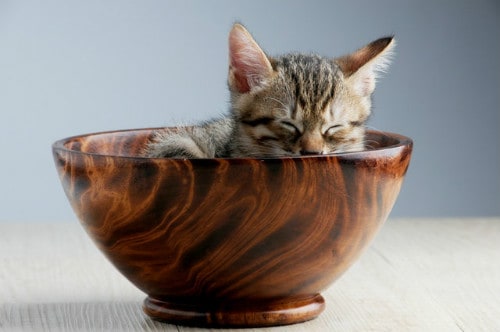
When they’re born, kittens are incredibly tiny. At just a few inches long and weighing between 3 and 4 ounces, they can fit in your hand with room to spare. If you want to hold them like this, now’s the time because they won’t stay this small for very long!
During the first few months of a kitten’s life, it will gain weight rapidly. A healthy kitten will gain between 0.25 and 0.5 ounces a day, doubling its mass by the two-week mark. At this point, the kittens can see and hear, and they’ve gotten big and strong enough to begin crawling around – such a dramatic change over such a short time!
They Grow Up So Fast
By the time it reaches four weeks old, the kitten will weigh around a pound. At three months old, it will weigh between three and five pounds and will have quadrupled in overall size. Six months usually marks the halfway point for kitten growth; here, they tend to weigh between five and eight pounds.
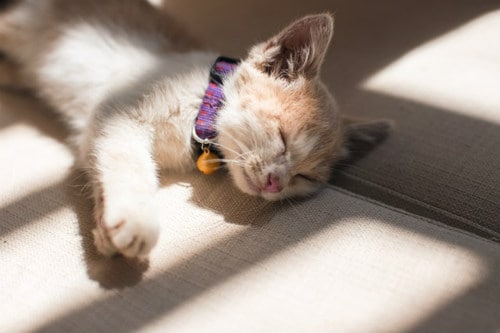
The sex of the cat begins to play a larger role in its size as development progresses. Male cats are generally larger than females, so they tend to weigh in closer to the upper end of the estimates than females.
The exact rate and duration of growth are highly dependent on individual genetics, but on average, a healthy kitten will gain around a pound a month for the first 12 months of its life. This is just an average; some breeds may reach their full adult size sooner than this, while some can continue growing for several years!
When fully grown, the average mixed-breed cat weighs between eight and ten pounds, measures 15 to 20 inches long (excluding the tail), and stands around 10 inches tall.
Measuring Growth
Many owners wonder about the proper height and length of their kittens as well as ideal weights. Unfortunately, guidelines for these aspects of cat size are not generally available.
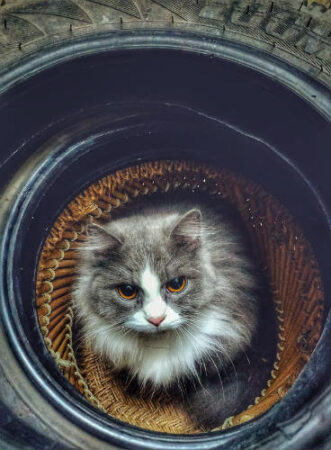
Height and length are less reliable measurements than weight because they vary wildly, not just between breeds but between individuals within a breed and even between kittens from the same litter. Thus, when tracking cat development, the focus is placed mostly on weight and achievement of milestones such as walking and eating solid food.
The Whys of Size: What Determines How Big a Cat Gets?
Many different factors contribute to a cat’s size. Some are hardcoded into their individual DNA, while others are variable based on environment. Let’s take a look at all the things that influence a feline’s size.
Sex
There are always exceptions to this rule, but in general male cats are larger than female cats. On average, males are several inches longer and several pounds heavier than females with the same breed and lifestyle.
Rearing Method
Many people, especially breeders, like to hand-feed their kittens; it’s believed that doing so causes them to bond with humans more easily than adults. However, a mother cat’s milk is designed to be the perfect sustenance for growing cats, and kittens who are nursed by their mother tend to grow faster and bigger than their hand-fed counterparts.
Though it’s a good idea to know how to feed kittens formula if their mother is unable to nurse them, doing so when not necessary can hinder growth and development. Kittens should be fed by their mother if at all possible and slowly weaned to prevent future health issues.
Birth Order and Number of Siblings
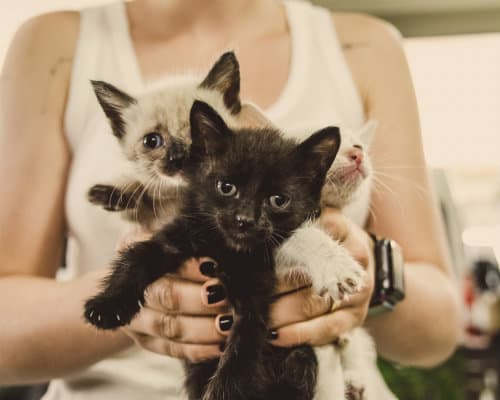
Often, a litter’s smallest member will be the one that was born last: the so-called runt. The last kitten out is at a disadvantage when it comes to feeding; the kittens who were there first got a head start on nursing and will usually grow larger in less time, giving them an even bigger advantage. Their size makes it easier for them to get to the front of the line at mealtime, pushing the runt out of the way and slowing its growth even more.
The more kittens there are in a litter, the fiercer the competition for food becomes. Smaller kittens, unable to fight their way through the crowd, get the least milk and grow much slower as a result. The effects of these early tribulations last a lifetime; runts can remain small into adulthood, if they manage to survive at all.
Intact Status
A common myth states that neutering a cat will cause it to gain weight. This is untrue, but spaying or neutering a cat can still influence its growth in other ways depending on the cat’s age when the procedure is performed.
Some vets will spay or neuter cats when they weigh at least two pounds, while others prefer to wait until the cats reach a weight of four pounds or more. Either way, a cat that is fixed before it reaches sexual maturity (which usually occurs at around six months of age) will tend to reach a smaller adult size than an unfixed cat.
This is due to the hormones that are released during puberty, which can cause growth spurts (very similar to what humans experience as teenagers)! You may have noticed that intact male cats, in particular, look very different from their neutered counterparts, boasting more muscle and broader faces. This results from these hormonal growth spurts, which don’t occur if the cat is fixed before puberty.
Relationship between Neutering/Spaying and Muscle Mass:
Neutering or spaying a cat generally doesn’t affect its overall size or growth. Cats reach their adult size based on their genetics, nutrition, and overall health. However, there is one aspect that may be affected by neutering, which is muscle mass. Testosterone, the hormone produced by the testicles, plays a role in developing muscle mass. Neutered male cats may have slightly less muscle mass compared to their intact counterparts, which could result in a slightly different body shape or appearance, but this difference is generally not very significant.
Though some owners report that their cats gain weight after being fixed, this is not a result of the neutering itself but rather of the post-operative side effects. Cats tend to be lethargic for several weeks after surgery and may be hungrier during this time as well, leading to weight gain. Additionally, fixed cats need fewer calories than unfixed cats due to reduced hormonal activity, so they may put on a few pounds if their food portions aren’t adjusted.
Diet and Exercise
At a certain age, usually around one year old, cats reach their full adult size, and their skeletons stop growing. Though they won’t really get any longer or taller after this point, they can still grow (or shrink) in one dimension: weight.
Cats gain and lose weight as humans do: if the number of calories they consume is greater than the number they burn, they gain weight. If the inverse is true – the calorie intake is less than the calorie output – then the cat will lose weight. If both numbers are the same, or at least fairly close, the cat’s weight will be stable.
When a cat is given too much food and not enough exercise, it will begin to pack on the pounds. Some cats are just naturally stocky, but it’s easy to tell when the extra wideness comes from fat: the cat’s belly will appear rounded, especially from above, and will have a distinct “jiggle” that muscle and bone do not display. Fat cats may look cute and cuddly, but they’re prone to many health problems ranging from heart disease and breathing issues to leg injury and hip dysplasia.
A too-thin cat, on the other hand, will appear narrow from above, particularly around the waist and hips. Its ribs and spine may be felt or seen through its skin, whereas you should not be able to feel these in a cat that is lean but healthy. Thin cats have health risks of their own, including bone fragility and immune system disorders.
Health Conditions
Some kittens are born with genetic conditions that affect their size. The most common of these is dwarfism, which occurs in two forms.
Pituitary dwarfism is caused by a reduced production of growth hormones in the pituitary gland. Kittens with this form of dwarfism grow and develop more slowly than normal; sometimes, development stops altogether before the cat leaves kittenhood. Unfortunately, because the kitten’s organs often don’t grow to sustainable sizes, survival rates for this form of dwarfism are low.
Life expectancy is higher in cats with the other form of dwarfism, osteochondrodysplasia, which causes abnormal cartilage and bone development. Other parts of the cat develop normally, and kittens with this condition often survive into adulthood, albeit with short legs, a small jaw, and sometimes a curved spine. Though they are at a high risk of developing future health problems, cats with this form of dwarfism can live long lives even at their reduced size.
Breed
Perhaps the biggest determining factor in a cat’s size is its breed. Some breeds can reach massive sizes, while others remain small even when fully grown. Most domestic cats are a mixture of different breeds and fall somewhere in between huge and tiny, but if your cat’s ancestry includes one of these breeds, it may be destined to reach greater (or lesser) heights.
Please note that the weights given are healthy ranges; as with all cats, these breeds can be overweight or underweight, so individual cats may weigh more or less than the amounts given here.
Big: Maine Coon
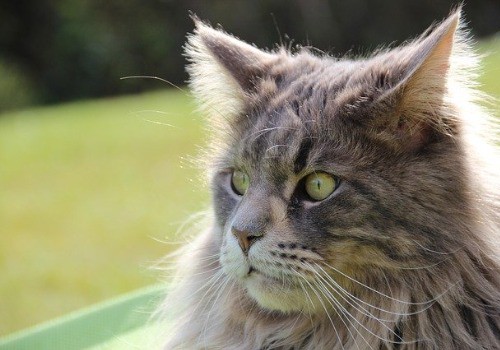
Clocking in at up to 25 pounds and measuring up to four feet in length, Maine Coons are truly massive cats. A Maine Coon holds the world record for the longest cat, and they’re comparable in size to wild Eurasian lynxes, which average about four feet long. Reaching such great sizes takes time; Maine Coons need three to five years to grow to their full adult size, compared to one year for most other breeds!
Big: Norwegian Forest Cat
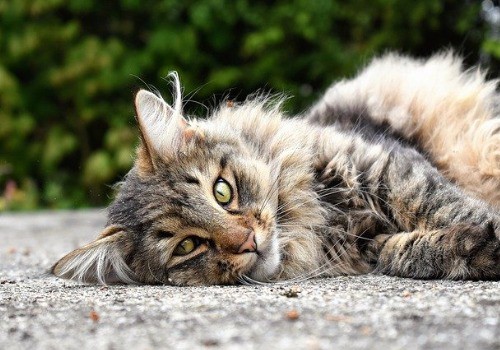
Sometimes thought of as the European version of the Maine Coon, the Norwegian Forest Cat is a beast in its own right. Their big bones and fluffy coat contribute to their large sizes – up to 18 pounds for females and up to 20 for males.
Big: Bengal
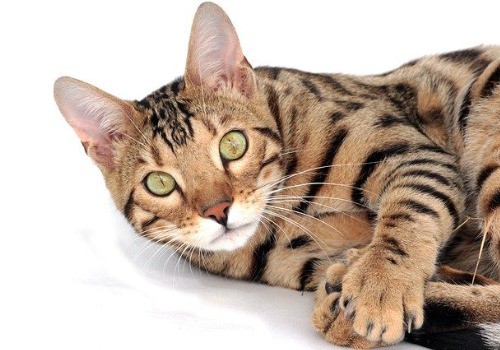
Originally a cross between a domestic cat and an Asian Leopard, the Bengal sports the trademark spots of its wild ancestor in addition to its size and shape. Long, lean, and decidedly leopardlike, the Bengal can weigh up to 22 pounds. Combined with its highly active temperament, this large size makes it one of the trickiest breeds to keep.
With roots in Singapore, this breed has only been around since the 1970s, so it’s still fairly new to the cat world. Its large eyes and ears dwarf the rest of its body, which is around half the size of an average domestic cat. In fact, it barely weighs more than a kitten – fully grown females weigh around four pounds, while adult males tip the scales at six pounds.
Small: Munchkin
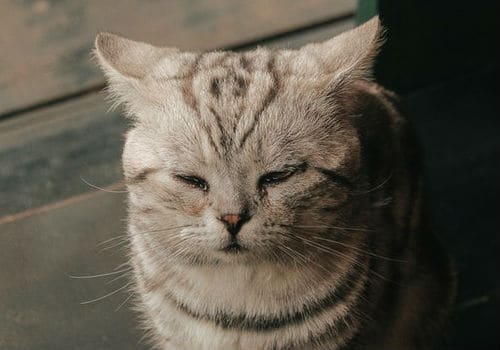
This breed is highly controversial, as its small size results from a genetic abnormality: dwarfism. Breeders intentionally select felines with this condition to produce cats with short legs (the signature feature of the Munchkin breed), but severe health conditions can appear later in the cat’s life, and some owners report that the Munchkin’s short legs prevent it from running and jumping. Though the Munchkin’s body is not much smaller than an average housecat’s, its legs are far shorter, reducing its weight to around six pounds for a female and eight pounds for a male.
Small: Cornish Rex

Renowned by cat enthusiasts for its unique wavy fur and giant ears, the Cornish Rex is slender and lightweight. With long legs, a small head, and a svelte arched body, this breed is to cats what a Greyhound or Whippet is to dogs. Cornish Rex females weigh around six pounds, while males weigh around eight pounds.
14 Biggest Cats in the World (Video)
"In ancient times cats were worshipped as gods; they have not forgotten this."
-- Terry Pratchett

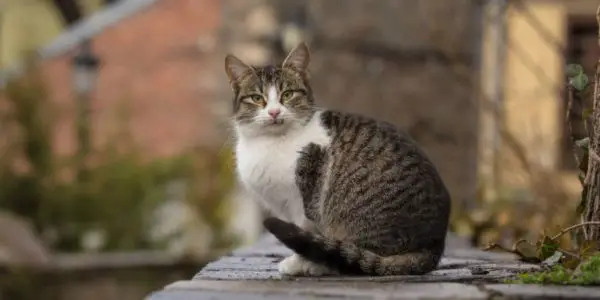




My cat is 18 in. long not including tail. he weighs 19 pounds. I Feel so bad about that and am trying to put him on a diet. I read that it’s dangerous to do this too quickly. I also read that dry food is more fattening than wet. I will just give him less of each. Thanks
Pretty smart. 🙂
P.S. On the quote, I feel its actually pretty true.
Please check your information on neutered cats being smaller than their non-fixed counterparts. This is plenty of information that contradicts this.
Thank you for the comment. I clarified the article.